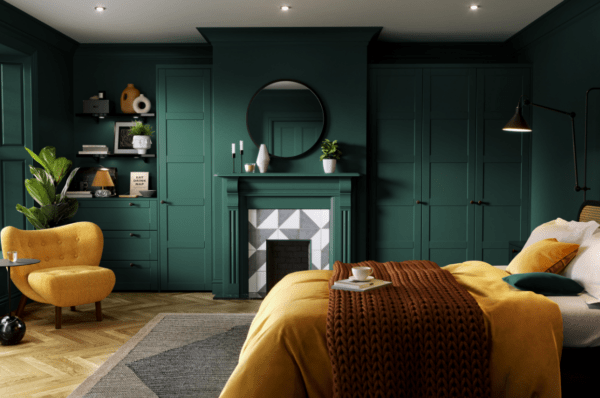
Phonics………What On Earth Is My Child Talking About??
10 phonic terms your child hears at school

Ok, so you might be a Reception parent and new to the game or you might be a seasoned parent, but the fact remains; this world of phonics is NOT how we learnt to read and write at school in our day (queue flashbacks and memories to your primary years…..ahhhhhh). Ok back in the room. I certainly didn’t know any of this until I trained to be a teacher. Forget learning French, Spanish, German etc, this is a second language all of its own and it’s still in English!
Well, an essential part of reading independently is understanding how various letters work together to form a sound. This is known as Phonics. Phonics course, when taught early to kids, can help them spell out larger and unfamiliar words by sounding out the various digraphs or letter groups.
For a lot of parents getting some extra help in all of this can be really useful. This help can come from resource type websites that are really geared towards teachers such as Primary Resources. It can also come from extra curricular teaching help from private tuition companies like Discover & Be, where the child gets personal time with a teacher that can help bring their school learning together. A quick Google search will show up any number of companies like this near to you.
Here’s a break down of the jargon guaranteed to impress your kids and any dinner party guests:
1) WHAT IS A PHONEME?
It’s a single unit of sound/ the shortest sound in a word.
E.g.
Cat has 3 phonemes
- C
- A
- T
Shop also has three phonemes
- SH
- O
- P
It has 4 letters but the ‘sh’ is only 1 sound so it’s still a 3 phoneme word.
2) WHAT IS A GRAPHEME?
A grapheme is the visual representation of a phoneme. It’s seeing the letters that make a sound written down. Just as you are doing right now reading this article.
3) WHAT IS A DIGRAPH?
Two letters that make one sound. These are two letters that CANNOT be separated into two sounds.
E.g. sh, th, ph, oo, ai, ow etc.
4) WHAT IS A LONG VOWEL PHONEME?
A long vowel phoneme is when two vowels are next to each other in a word. When this happens it makes the first vowel say it’s name (the long vowel sound).
The rule is……’when two vowels go walking, the first one does the talking’.
E.g rain, Sheep, lie, toe, cue
5) WHAT IS A SPLIT DIGRAPH?
You may have called this as ‘magic e’ when you were a child learning to read at school, but these days good practice suggest that we should teach children the correct names for everything, so they will learn the term ‘split digraph’. It is where a digraph finishing with an ‘e’ representing a vowel (ae, ee, ie, oe, ue) is split up. The ‘e’ whether next to the other vowel or split from it, makes the vowel say it’s name rather than it’s sound.
E.g. M A D, the ‘A’ is a short vowel sound. M A D E, the ‘E’ makes the vowel say it’s name, so it is a long vowel sound. This is tricky to explain in writing so here are a couple of clips to listen to, to make it clearer:
Mr Thorne Does Phonics – split digraph a_e
As I mentioned before it’s not a good idea to teach the term ‘Magic e’, but this song is still super helpful and has lots of examples of split digraphs so you don’t have to search for examples.
6) WHAT IS A TRIGRAPH?
A Triagraph is basically three letters that make one sound.
E.g.
- igh – high
- ear – hear
- air – hair
- ure – sure
7) WHAT IS A HOMOPHONE?
Two words that sounds the same, but are spelt differently and have different meanings.
E.g.
- their, there, they’re
- are, our
- red, read
- no, know
This area of phonics can become quite complicated, but this is generally what primary aged children are taught. For those of you who would like a little more info here is a diagram that gives you a little more in-depth information.
 8) WHAT IS A BLEND?
8) WHAT IS A BLEND?
These are sounds made by two consonants being placed next to each other to create a specific sound. These sounds can still be separated into two individual sounds. (If the sounds can’t be separated it is a digraph)
Examples of blends
- sp – spoon
- pl – plug
- fr – frog
- tr – tree
9) WHAT IS BLENDING?
Blending is basically reading. It is the ability to see the sounds in a word and to be able to say them separately and then push them together so you have the built a whole word.
E.g. READING
R (phoneme) EA (digraph) D(phoneme) I(phoneme) NG (digraph)
Push these sounds to together (blend them) and you have the word reading.
10) WHAT IS SEGMENTING?
Segmenting is the opposite to blending. This is the ability to look at an unfamiliar word, separate the sounds out into phonemes (digraphs, trigraphs, blends etc) and then to be able to blend them together again to read the new word. Or to be able to separate the sounds heard in a word in order to try to write it down. This is also called sounding out.

Blending and segmenting work together hand in hand and we all use these skills naturally when dealing with unfamiliar words.

Now you have got the 10 terms at your fingertips. Do use them when reading with your child. You can ask your little ones to identify the digraph in a word or ask them it if is a long vowel sound or a short one, when they are sounding out. It’s great for them to review the terms and also it really does help support their reading and writing. Now all that’s left is to do is throw that dinner party and impress those guests!

By: Sheila Datoo, Academic Co-ordinator
Having always had a passion for Art and Design, Sheila attended Winchester School of Art to complete a foundation year. As a lover of learning, Sheila also completed a number of travel qualifications resulting in her working for the Travel Editor of the Telegraph for a period of time. She then graduated from Chichester University with a BA Hons in Primary Education specialising in Early Years education.

















































